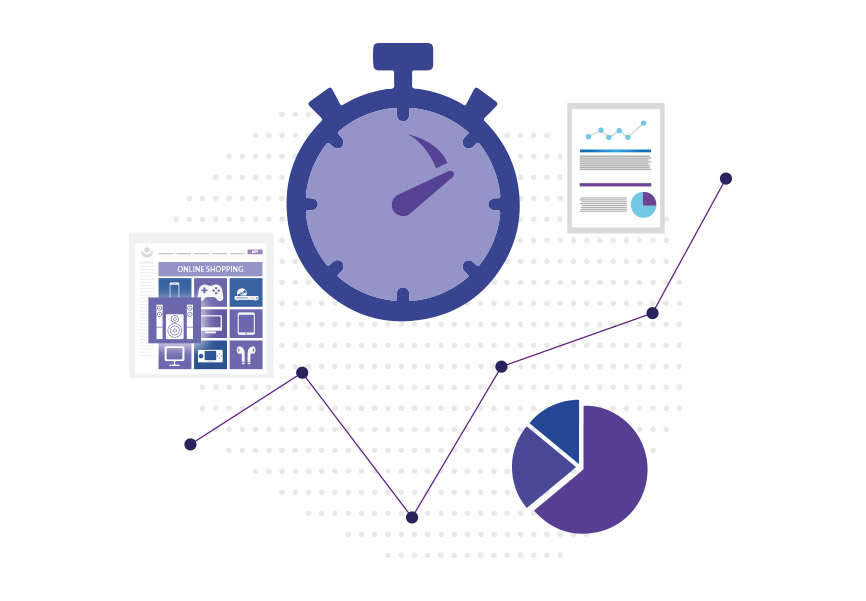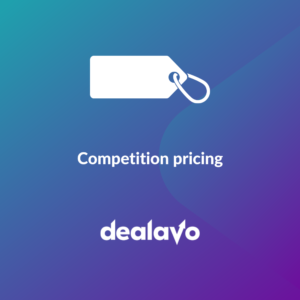
Competition pricing as a basis for stable e-commerce business development
- 14 June 2024
Competitors’ prices and competition pricing
Having detailed knowledge of your competitor’s e-commerce prices is essential for positioning your shop’s offerings based on your price list. The better you understand your competitor’s prices and the dynamics of their changes, the more effectively you can adapt your offer to remain consistently attractive to customers. It is safe to say that thoroughly knowing your competitors’ prices is one of the cornerstones of a successful e-commerce business. With this knowledge, you can now react almost instantly to changes in your competitors’ prices. The ability to respond quickly is incredibly important because according to the report Customer Satisfaction in e-commerce during the COVID-19 Pandemic price is the most important factor that can influence customer satisfaction. As you can see, the faster you can react to price changes from competitors, the better your chances of making a sale.Successful e-commerce business tactics to improve price competitiveness
To use competitors’ prices as the foundation for building a profitable e-commerce business, it is essential to approach their use strategically. The following areas are of particular emphasis.Analysis of the price offering of shops in your niche
The implementation of a data-informed pricing strategy should be based on an ongoing analysis of your competitors’ shop offerings. Of course, no one is suggesting that you browse dozens of stores every day to ensure your offer is the most appealing from a customer perspective. Today, price intelligence software carry out these tasks, collecting precise price data on an ongoing basis from any shop you set to monitor. Their use extends beyond just monitoring shops. Advanced apps for competitor price monitoring also analyse the pricing situation on popular marketplace platforms and price comparison sites such as Google Shopping and Amazon. Closely linked to the analysis of competitor prices is a popular practice in e-commerce known as competitive pricing. This involves setting prices in your store based on prices of other brands in the market. You can find out more about it in the article: https://dealavo.com/en/competitive-pricing/Market-based pricing strategy
In addition to competitive pricing, the practice of price matching is often found in e-commerce. This approach is also closely related to your competitors’ prices, assuming that the cost of products in other stores serves as your starting point for pricing your products. As a rule of thumb, price matching involves setting your prices at the same level as other ships or lower when justified. Nowadays, it’s becoming increasingly common for price automation applications to use artificial intelligence to match your online shop’s prices with those offered by other retailers.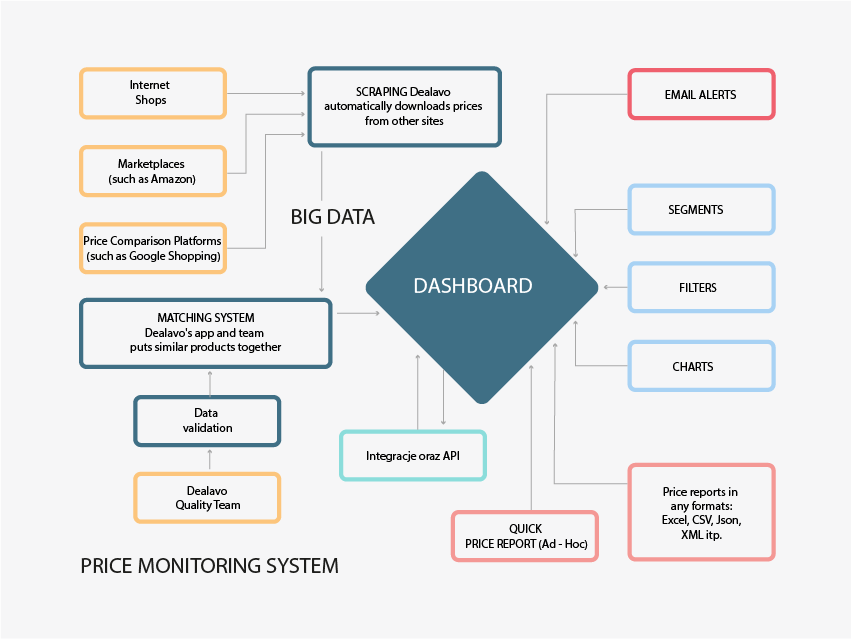
Price monitoring system in Dealavo
Dynamic pricing: software-based support in
Many companies, recognising the opportunities that technology offers, opt for a strategy known as dynamic pricing. This approach involves using advanced software to monitor and automate prices in e-commerce store. Dynamic pricing allow shops prices to be adapted to market conditions almost instantly. Retailers define logical rules in the software, which automatically changes prices when there rules are met.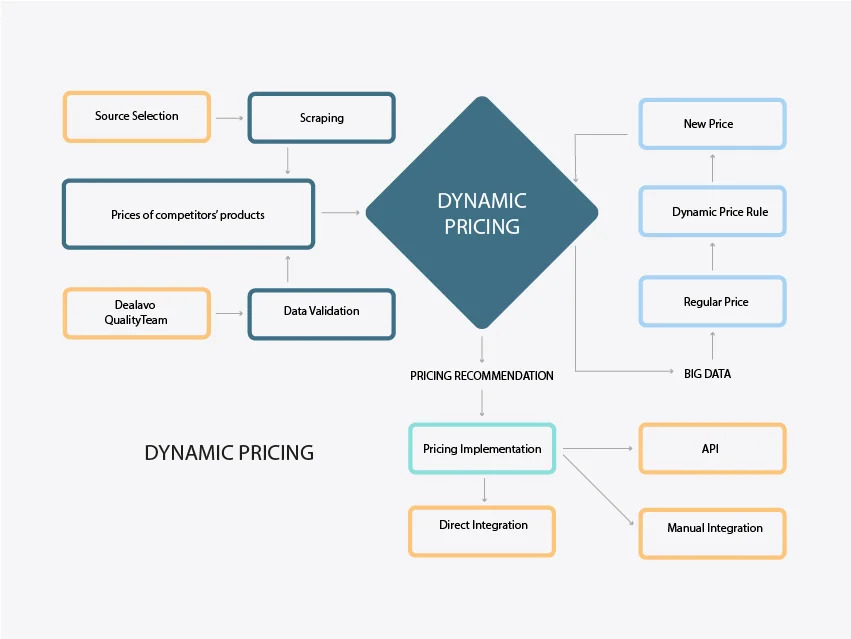 You can implement various scenarios with dynamic pricing, such as:
You can implement various scenarios with dynamic pricing, such as:
-
- Setting your shop’s prices 5% lower than other retailers;
-
- Increasing the price by a certain amount when monthly sales reach a specific threshold;
-
- Setting specific prices for a particular product category for a specified period;
Discounts and loyalty programs as a part of offer positioning
When discussing the review of your competitors’ prices, it is important to mention the analysis of each company’s discounting and promotion strategies. Having access to your competitors’ price lists provides you with the comprehensive information needed to assess the effectiveness of their promotions. This is particularly valuable, as popular sales platforms often display the number of customers who have purchased a particular product. With this data, you can introduce promotions in your own store that you believe have been successful for your competitors.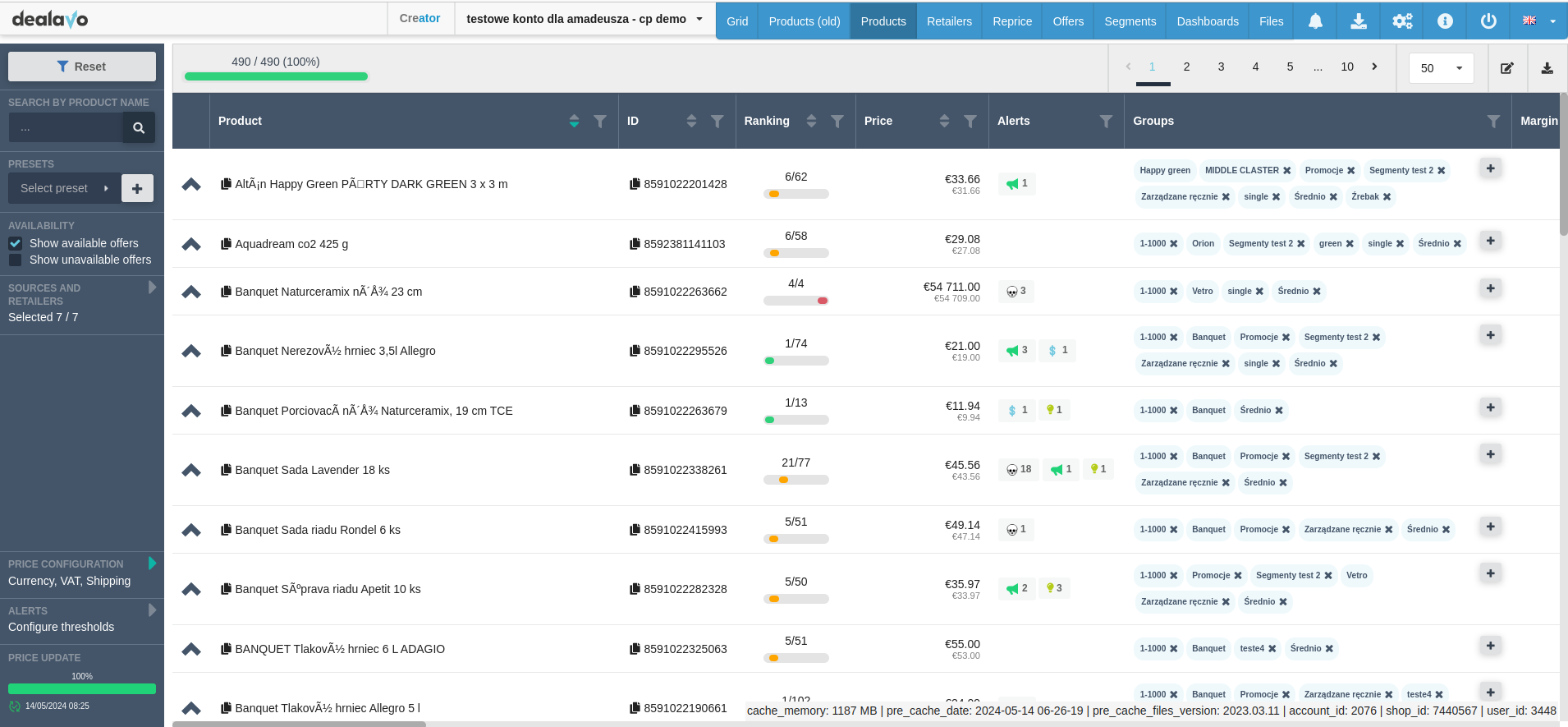
Benefits of knowing the competitors prices in e-commerce
We have already established that the price is, next to quality, the most important factor for customers to choose the shop. Or, at least for most people, this is the case. It’s the right place to mention all the other benefits of data related to competitors’ prices.1. Increasing interest in your offer among price-sensitive shoppers
Many shoppers have mastered the ability to filter products by the lowest price, If your competitors’ prices are lower than yours, you can forget about reaching this large group of shoppers with your offer. By applying automation software to your e-commerce, you can ensure that your prices are always attractive to customers hunting for low pirces.2. Building a brand based on pricing strategy
Price is a variable that positions your brand in the eyes of customers. If you consistently offer lower prices than your competitors, your store will be perceived as the most attractive place to shop. On the other hand, if you offer higher prices than your competitors, your store may cultivate a premium brand atmosphere. When it comes to pricing strategies, it’s worth knowing the available models:-
- Penetration pricing strategy: this model aims to increase sales by offering low prices. This approach is particularly popular among companies that start their operation in the market.
-
- Price skimming strategy: this strategy involves launching a product at a high initial price point that early adopters and affluent customers are willing to pay. The high prices signals exclusive and premium quality. Over time, as the product gains market acceptance and competition increases, the company gradually lowers the price to make it more accessible to the mass market.
-
- Low price strategy: here, the seller offers products at consistently low prices compared to competitors. This strategy is often employed for widely available or commodity-like products where price is a major factor in the purchasing decision. Companies aim to attract price-conscious customers and gain market share through aggressive pricing strategy.
3. Sales growth
Having detailed knowledge of the prices offered by the shops you are competing with for customers put you at an advantage. This knowledge allows you to flexibly adjust your price list to maximise sales.4. Pricing strategy improvements based precise data
Utilising professional analytical software enables you to estimate sales in specific shops. This information, combined with knowledge of your competitors’ prices, can provide an excellent basis for data driven price setting in your store.Pitfalls of price competitive measures
When taking actions related to your shop’s offering that are influenced by competitors’ prices, it’s crucial to be aware of potential negative consequences for the business. Here are some key considerations before making any pricing decisions.Margin below expectations
The cheapest option doesn’t always mean the best. This is well understood by both customers and retailers. Whenever introduce a price reduction in your shop, you need to carefully consider whether the anticipated increase in sales will be sufficient to maintain profitability. If you know that a price cut will negatively impact your business margin, you can try to negotiate better terms of cooperation with wholesalers from whom you source goods. Always check how your mark-up and margin will be affected when planning price changes.Risk of price war
Sellers almost always want their prices to be the lowest. Unfortunately, in some cases, the pursuit of this objective can escalate into an unhealthy price undercutting scenario, known as a price war. In this type of competition, no seller emerges as a winner. When monitoring competitors’ prices, be cautious about lowering your offer prices below profitability. Firstly, it can harm your business, and secondly, customers, upon perceiving the existence of unhealthy competition between shops, may begin to view both competing brands negatively.Lack of stability in the eyes of customers
When implementing a pricing strategy that makes into account the competition’s price, it’s advisable to be wary of making too frequent changes to your price list. Even if these changes are justified from a business perspective, they can create negative perception among shoppers. A shop where customers see different prices for the same products on a daily basis will not inspire a confidence in your company.Using your competitors’ prices to drive e-commerce growth – 4 important tips
Here, we would like to share some tips to enhance your operations based on the monitoring of your competitors’ prices.-
- Embrace price motirong software: much has been said about the role of price analysis and automation software. If you want to extract the maximum value from your competitors’ prices, you simply must have tools like Dealavo in your technological stack — software that automates many repetitive operations and adapts your shop’s pricing to market conditions.
-
- Detailed market segmentation: while not all customers pay close attention to price, those for whom it is a significant factor represent a sizable proportion of the market. It is therefore worthwhile to compete for these price-conscious shoppers. Prepare an ideal price offer tailored to those customers who expect the lowest price.
-
- Continuous price list optimisation: the implementation of a pricing strategy is an ongoing activity. This is why it is important to incorporate advanced software. Professional tools will relieve you of many tedious tasks and, crucially, provide precise data.
-
- Price as one component of growth: although this article has focused on price, it should never be the sole priority. Price reductions must not result in a deterioration of quality. So, it is essential to find the sweet spot where you can offer great quality at an attractive price — one that is appealing to both you and your buyers.


